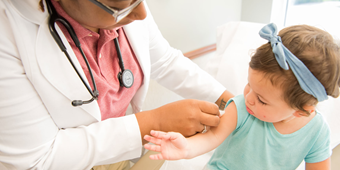Toxic Shock Syndrome: Serious, Sometimes Deadly

Answer a few questions and we'll provide you with a list of primary care providers that best fit your needs.
The earliest incidents of toxic shock syndrome (TSS) were associated with tampon use during menstrual periods. Although TSS still can be caused by tampons, there are many other possible causes. And it can occur not just in menstruating women, but also in children, men, and women of all ages.
TSS is rare, but serious. Because the symptoms of TSS are the same as other infections, and because no single test can diagnose it, TSS is sometimes difficult to recognize.
What Puts You At Risk For TSS?
JT Thomas, MD, obstetrician and gynecologist with Magnolia Women’s Health, explains that TSS is a deadly strain of the common Staphylococcus aureus (staph) bacteria.
“About 30 to 50 percent of children and adults carry it in their body, but most of them naturally develop antibodies to the toxin and they don’t get sick,” he says.
“Unfortunately, some don’t develop the antibodies – we believe this is due to a genetic predisposition – and they are unable to fight the toxin.” This is believed to be the case with a 17-year-old menstruating teen who died in 2017 during a camping trip.
 If you are without these antibodies, your risk of developing TSS is increased in these instances:
If you are without these antibodies, your risk of developing TSS is increased in these instances:
- Recently had a child
- Have a staph infection
- Use a foreign material (e.g. gauze) inside your body, such as packing to stop a nosebleed
- Are menstruating
- Recently had surgery, a skin infection, or burns
- Use tampons. Doctors recommend avoiding highly absorbent tampons and changing tampons at least every eight hours, or using tampons only periodically during menstruation.
- Have a wound infection following surgery
Because the symptoms of TSS are the same as other infections, and because no single test can diagnose it, TSS is sometimes difficult to recognize.
What You Should Look For
The symptoms of TSS strike quickly. They can include:
- Confusion
- High fever
- Headache
- Sore throat
- Muscle aches and pain
- Nausea
- Vomiting
- Watery diarrhea
- Abnormally low blood pressure
- Skin rash that resembles a bad sunburn and which develops quickly and later peels, especially on the palms and soles of the feet
How TSS Is Diagnosed And Treated
There is no single test that doctors can use to diagnose TSS. Instead your doctor will:
- Look for the symptoms listed above
- Watch for possible problems with the function of any of your organs
- Work to rule out other possible diseases
Treatment first involves removing any packing material, including tampons, and draining infection. To keep your organs functioning, you may be given antibiotics (through an IV if needed), fluids through an IV, dialysis if you have severe kidney problems, and medicine to control your blood pressure.
Because TSS can be deadly in up to 50 percent of cases, treatment may involve hospitalization.
Answer a few questions and we'll provide you with a list of primary care providers that best fit your needs.
Sources: JT Thomas, MD, Magnolia Women’s Health; MedlinePlus (National Institutes of Health); National Organization for Rare Disorders




